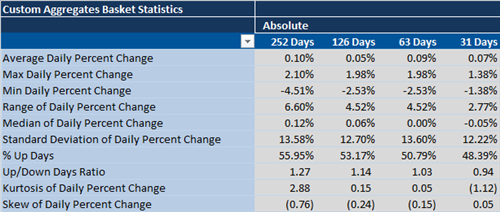With Japan's consumption tax increase in full swing (sales tax rates rose from 5% to 8% in April) we've seen a lot of speculation as to the effects of the tax increase on the Japanese economy. Most commentaries make some sort of comparison with the last time the consumption tax was increased in April of 1997, when the tax rose from 3% to 5%. Japan's economy experienced moderate weakness immediately following the tax increase and then more acute weakness in 1998-1999 as the Asian financial crisis took hold of the region. Real GDP did not exceed the 1997 peak until Q1 2001. The tax increase is often blamed for the recession from 1997-1999, but it is hard to distinguish the effects of the tax increase from those stemming from the Asian financial crisis. In any case, we thought we'd provide an objective comparison of economic variables between 1997 and 2014 so we can better see the differences in the economic circumstances facing Japan in both periods.
First we'll start with GDP. Both nominal and real GDP growth during the four quarters directly preceding the tax increase are weaker in 2014 than in 1997 (note we are using consensus estimates to calculate Q1 2014 GDP). Nominal GDP growth is not materially weaker, but real GDP averaged almost 1% higher in the period leading up to the tax increase.
How does the makeup of GDP today compare with the makeup of GDP in 1997? Private consumption is about 6% higher today as a portion of total GDP than in 1997, and public spending is also higher today by 1.5%. Investment is lower today and trade now subtracts from GDP.
Next we'll have a look at the contribution to GDP growth from the various components from the year preceding each tax increase (i.e. where did the growth come from in 1996 vs 2013). From the table below we can easily see that growth going into 1997 was far more balanced than it has been recently. Growth in 2013 was mainly driven by private consumption and government spending and trade was a big drag.
Of the standard economic indicators we look at, only trade seems to be weaker today than in 1997. Keep in mind though that the recent rise in consumer and producer prices is mostly attributable to the depreciation of the yen leading import prices higher.
Finally, here is a look at the fiscal situation then and now. To say the Japan's fiscal situation has deteriorated would be an understatement. Public debt as a percent of GDP is 3.2x higher today and the budget deficit is 3.8x higher. If the Japanese economy weakens for whatever reason, there is little room for maneuver.

All in all, it appears that Japan is in a less favorable position today to absorb a tax increase than in 1997. GDP growth is weaker and has been boosted unsustainably by government spending. The other area of strength in the economy, private consumption, is now a larger portion of GDP today then in 1997 and was also the largest contributing component to growth in 2013. Private consumption is the area most likely to experience weakness from the tax increase since taxes disincentivize behavior. Note also that the tax increase in 2014 is 3% vs a 2% increase in 1997. Finally, if economic weakness does ensue, there won't be much the Japanese government could do on the fiscal side as an offset.
















































